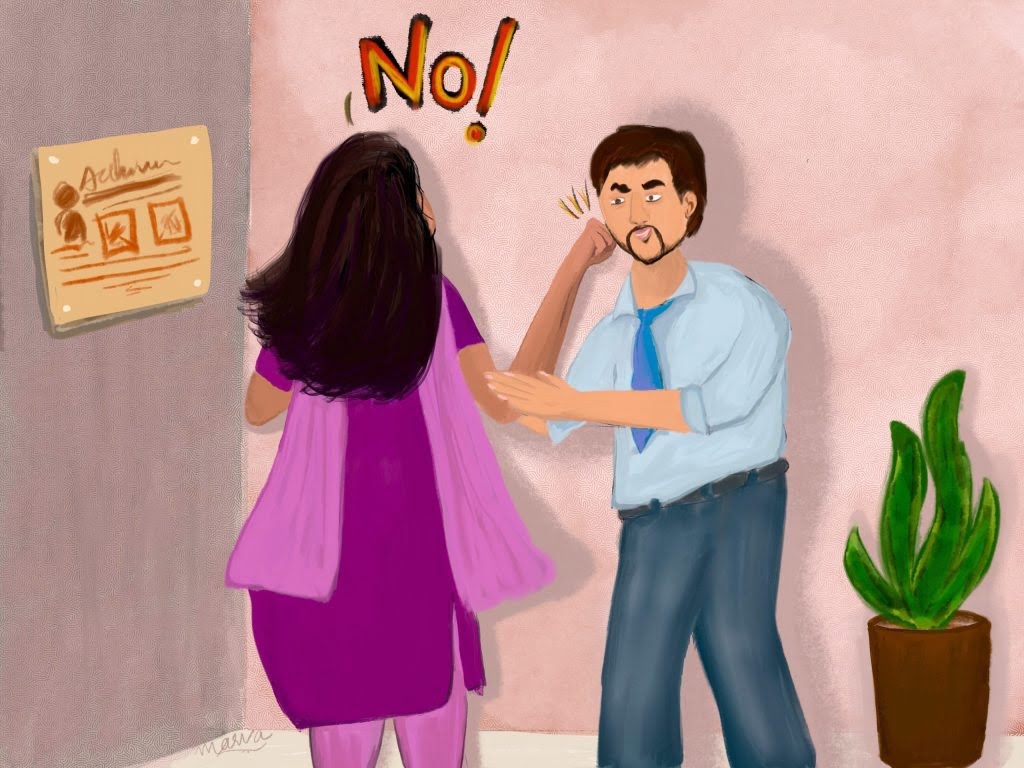On the afternoon of October 26, 2020, a 20-year-old girl was shot dead outside her college in Haryana’s Ballabgarh. On a busy street in an educational institution’s vicinity, the girl identified as Nikita Tomar was shot point-blank with a country-made pistol, after she resisted abduction. The entire incident was caught in CCTV footage and showed that while people were continuously passing through, nobody except a woman came forward to help the victim.
Tausheef had asked Nikita to marry him and was trying to convince her to convert to Islam but she continuously refused. He had abducted her in 2018 and a complaint was lodged, but later the two parties reached a ‘compromise’ and took back the official complaint. Nikita Tomar’s case is just the tip of an iceberg of rampant rejection-induced violence in India.
The victim’s family identified the killer as Tausheef, a politically-connected student, who had been stalking Nikita Tomar since 2018. Tausheef had asked Nikita to marry him and was trying to convince her to convert to Islam but she continuously refused. He had abducted her in 2018 and a complaint was lodged, but later the two parties reached a ‘compromise’ and took back the official complaint. Nikita Tomar’s case is just the tip of an iceberg of rampant rejection-induced violence in India.
Also read: Caste Impunity Vs Legal Protection For The Hathras Rape Victim
A deeper psychological study is required to understand the Indian masculinity’s reaction to rejection of a love proposal.
On June 27, 2020, a girl was shot two days before her wedding in Meerut, Uttar Pradesh. The alleged stalker Saagar had interrupted a pre-wedding function at midnight and opened fire killing the girl and her father in their own home. Another 19-year-old girl was bludgeoned to death in a market place in Ghaziabad, in full public view. The stalker decided to end the life of the victim because she refused to marry him and was engaged to someone else. Harish, a 30-year-old man was arrested in 2018 for stalking and killing a 25-year-old Chartered Accountant. He claimed to love her and expressed his intentions of marrying the woman, but when she refused and decided to marry somewhere else, he shot her dead.
Rejection-induced violence cases in India are nothing new and have been rising unhinged. While media discusses the loopholes of law and involvement of political bias in these cases, my article tries to unveil the psychological construction of Indian masculinity that results in these brutal incidents of rejection-induced violence.
Gendering Rejection And The Aftermath
Gender is a social construct that is performed by an individual at all times, some more than the other. The construction is so immaculate that men are burdened with the responsibility of following the ‘masculinity guide’ to a T. Indian masculinity is a careful construction of power, position, and pride. The assertion of all three at every step in a social hierarchy is mandatory for a man to become a ‘man’. Men are brought up in a very different environment than the women; they are served the best meals, they are looked after by the women of the household, and are taught how their job is to be the guardians of honor. Once the woman becomes an object to be protected, the man is permitted to objectify the women outside his territory and thus faults in assuming that all women are his commodities. The commodification leads to him developing feelings of possession, where power must win him the object he decides to like, irrespective of the woman’s agency of making a choice.

The rejection of the advancement of love is as much gendered as the agency to love. Men and women deal with rejection differently. The reactions are primarily a commentary on their cultural and family backgrounds. While women are taught to “move-on” and internalise the rejection, men are taught to “make-even” and punish the other. Women are allowed to experience a break-down of self-confidence in a culture, but men are expected to preserve their macho and pursue the rejection until it converts to an agreement. Bollywood has taught Indian males the concept of “Ladki ki naa mein bhi haan hai”(Even when the girl says no, she means yes) and if that doesn’t happen, then there are role models of Kabir Singh and Devdas, who self-destructively drown themselves in alcohol for the woman to take notice.
But then there are the few who have been brought up in families where violence is an accepted norm, they take rejection as a violation of their rights over the woman. For the hypersensitive man, it becomes difficult to handle his aggression and he results in taking violent actions. The thought of Meri nahi to kisi ki nahi (if she can’t belong to me, she won’t belong to anyone else) is a culprit of pumping the dangerous male ego.
Rejection-The Deepest Human Fear
Rejection-induced violence is a serious problem in India, as the nation is dealing with a binary of tradition and modernity. While women are taught to break the patriarchal barriers and step out in the world, men are caught up in the frenzy of possessors and guardians.
Researching for this article, I realised there was a pattern to the crimes committed. They were mostly executed in public places like roads or bazaars, for the world to witness the macho of the rejected man. The others were committed in the homes of the victim in the presence of their family as if a statement of ruining the family’s honor is made. In both cases, public and private space for a woman to exist ceases to be.
Also read: What Survivor-centric Approaches Can Look Like Within The Letter Of Law
Rejection-induced violence is a serious problem in India, as the nation is dealing with a binary of tradition and modernity. While women are taught to break the patriarchal barriers and step out in the world, men are caught up in the frenzy of possessors and guardians. While nothing can excuse the violence they cause, maybe the murders are a call for the ‘New India’ to stop and look at its male counterpart with compassion, for the men are taught to not cry or express their sorrow. The New Man must be constructed as an answer to the New (Indian) Woman, as one who can cry or seek professional help for his emotional meltdowns.
Featured Image Source: Marva M/ Feminism In India
About the author(s)
Dr. Guni Vats is an Assistant Professor at the Department of English, Manav Rachna International Institute of Research and Studies. A PhD in Gender Studies, she is a renowned researcher, writer, and scholar.






Right, this has nothing to do with religion and everything to do with Indian masculinity /s
It has everything to do with religion and Indian masculinity, the article was about how Masculinity cannot cope with rejection, the rejection was both for love and conversion to Islam, as mentioned in the first paragraph. But I refuse to believe that it was only religion.
It’s sad how you wrote such a big useful article but failed to mention the religious angle. If you read a little bit further into these cases you’d find that the Merut & Ballabgarh murder cases had some things in common. Faking religious identity intentionally & a rejection to convert to Islam. How is it a simple man like me can see it but a journalist who’s intent is education for women fails to see it?
I am sorry that you saw it as sad, and I am glad that you found it useful. I researched deeply and read about the conversion part, rest assured. The faking religious identity and the aggression over conversion is so prevalent that we just refuse to see deeper. My article was only an attempt to shed some light on the deeper psychological aspects of rejection-induced violence. I am sure if you view it from a non-religious perspective, you will see that a common patriarchal ailment rots our society, irrespective of religious identity.